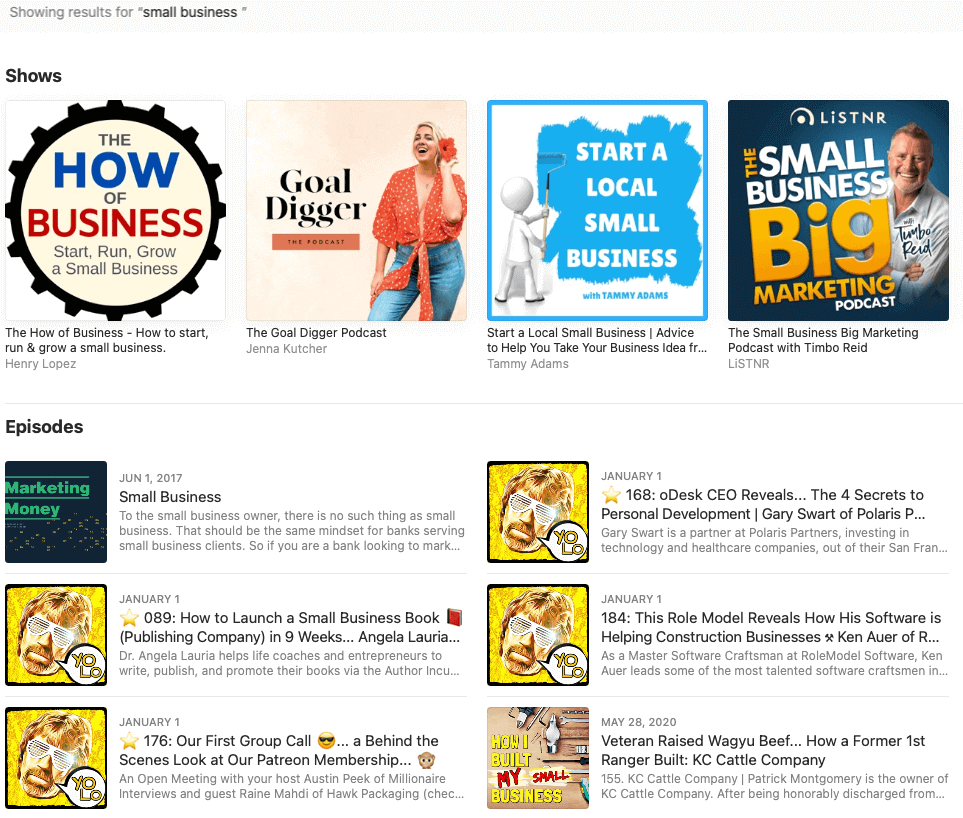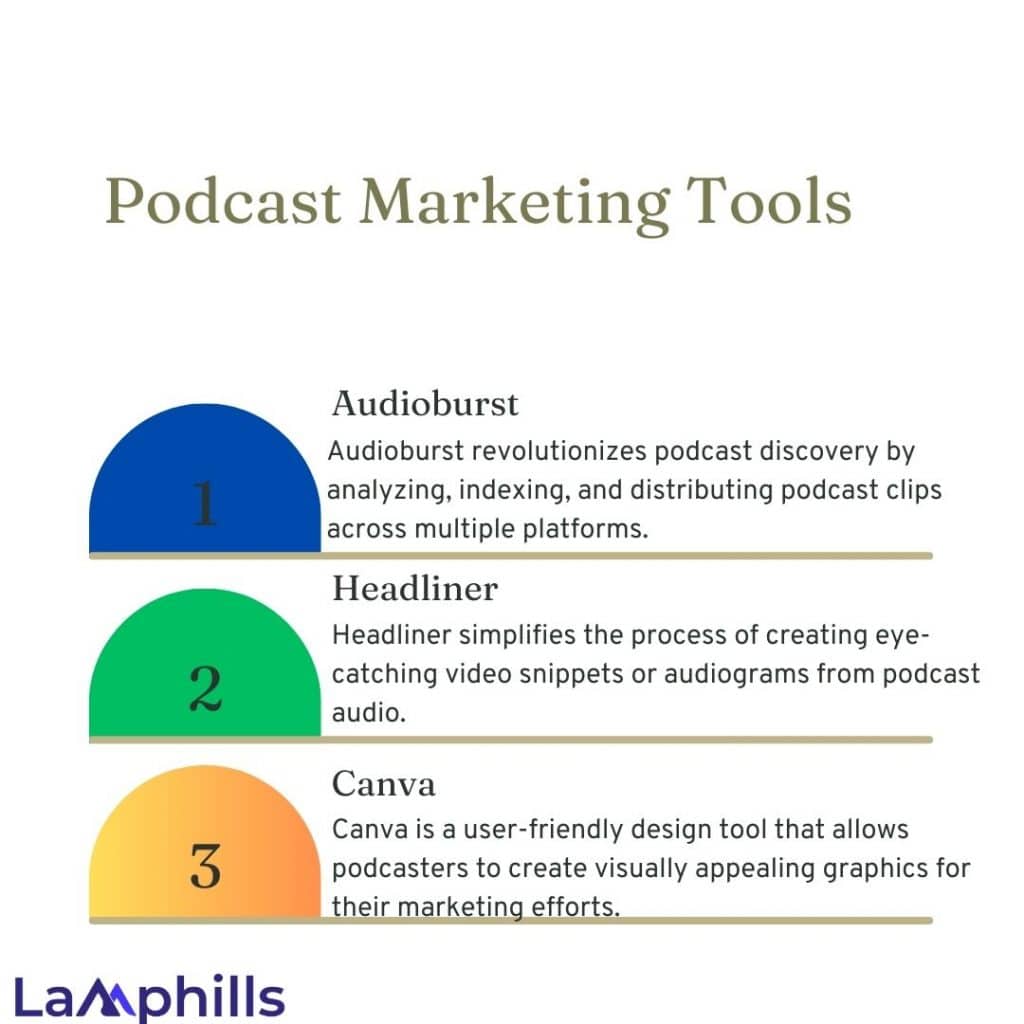Every creator has wondered, “How do I grow my podcast audience?” at some point. And that’s perfectly natural—you’ve poured your heart, soul, and creativity into the show, and now you want as many listeners as possible to enjoy it. To make that happen, you might want to equip yourself with the best strategies to boost your podcast marketing.
The word marketing can be intimidating since it frequently conjures up images of large resources and intricate campaigns that are out of the reach of the typical creator. But expensive marketing isn’t the only way to get more eyes and ears on your show. With the appropriate strategy and a little imagination, you can achieve successful podcast marketing.
Keep reading as I will cover the need-to-know tips for podcast marketing and provide you with a comprehensive checklist guide on how you can monetize your podcast.
Key Points
- Podcast marketing refers to any strategy or plan you can act on to grow your podcast audience and increase its visibility.
- The costs of podcast marketing vary depending on the strategy; some methods are free, while others require a budget for ads or hiring agencies.
- Podcast marketing is a continuous effort that requires creativity, experimentation, and consistent results tracking to adjust strategies for optimal growth.
What Is a Podcast Marketing?

Podcast marketing refers to any strategy or plan you can act on to grow your podcast audience and increase its visibility.
As I said earlier in my introduction, creators all over the world have, at some point, asked themselves, “How do I grow my podcast audience?” The first thing that I want to let you know is that growth takes time. Podcasting is a long-term play, specifically podcast marketing. Don’t release a series; expect to be on the top charts with thousands of listeners and sales spiking the first week.
Sometimes, people have high expectations for immediate, spectacular outcomes, and when they don’t get them, they lose all motivation to keep going. Because this happens so frequently, the industry has coined the word “pod fades,” which describes the situation in which podcasts begin vigorously by publishing episodes and engaging in regular marketing but eventually discover they need to put in a lot of work and patience to see results and eventually fade away.
Growing a podcast takes dedication, patience, and strategy. Marketing your show is no different. There are so many strategies you can explore to grow your series, and below, I’ve laid out 15 key areas to get you started.
But remember, not every one of these podcast marketing strategies needs to be used at once. Gradually start experimenting to find out what resonates with your target audience. After giving it all the time and attention it requires and still finding that one fails to pay off, give it up and try something else. Let’s explore!
#1. Create a Landing Page for Your Podcast
For the convenience of listeners, create a unique landing page for your podcast. It needs to guarantee that listeners concentrate on your podcast’s episodes. In addition, the page needs to include a headline that clearly expresses the value of your product. Explain your podcast and the advantages that listeners will experience. To increase the ranking, accessibility, and internal linking of your pages, give a summary and emphasize the main ideas discussed in the podcast. Use automated podcast notes generator tools to create a summary without breaking a sweat.
Also, ensure the page includes working links to all published episodes. Creating a landing page with a tool like SendPulse is very simple and will take you around 15 to 20 minutes. With the help of their drag-and-drop builder, you’ll easily design an amazing landing page for your podcast.
#2. Consider Your Target Audience: Create an Audience Persona
Secondly, any marketer worth their salt will tell you you won’t get far without clearly understanding your target audience.
You may think it makes sense to try getting seen by everyone—after all, the more eyes on your show, the bigger the prospective audience, right?
But the truth is, your podcast isn’t suitable for everyone. You may be able to throw a ton of money and time at podcast promotion and earn a lot of new listeners or downloads, but is your goal to create a temporary spike in listeners, or is it to attract listeners who become long-term subscribers because they like what they hear?
It’s most likely the second choice. Am I right? If so, research those people before launching your podcast’s marketing.
Creating a listener persona for your podcast can help you define your target listener’s needs, wants, and preferences so that you can provide episodes your audience will be clamoring to download. Naturally, using actual listener data and market research is the ideal way to develop a listener persona. But if you don’t have many subscribers yet and have no idea how to conduct market research, that’s okay.
Take a few minutes to check out our listener persona template below.
Lamphills Listener Persona Template
After going through our listener persona template above, create your episodes and build your brand identity around that imaginary listener persona’s interests and values.
Read also: HOW TO REACH YOUR IDEAL AUDIENCE: Mastering Social Media Targeting Strategies
#3. Leverage Social Media
Social media platforms have become indispensable tools for podcast marketing and audience engagement. You can create a thriving community around your podcast by leveraging the right platforms and actively interacting with your audience. Let’s explore how to choose the right social media platforms for your target audience and build meaningful connections.
Choose the Right Social Media Platforms for Your Target Audience
Not all social media platforms are created equal, and different platforms cater to different demographics and interests. Understanding your target audience’s preferences and behaviors will help you choose the most effective platforms for promoting your podcast.
For example, if your podcast targets a younger demographic or focuses on visual content, platforms like Instagram, TikTok, or YouTube may be your best bet. These platforms allow you to share engaging visuals, videos, and behind-the-scenes snippets to captivate your audience. On the other hand, if you’re targeting professionals or industry experts, LinkedIn and Twitter might be more suitable for networking, sharing insights, and engaging in relevant conversations.
Conduct research and analyze the demographics of each social media platform to align with your target audience, paying particular attention to factors like age, gender, interests, and engagement levels. Selecting the platforms where your audience is most active can maximize your reach and create meaningful connections.
Engage Your Audience and Foster a Community
After you’ve made an initial impression, it’s time to start interacting with your audience on social media. React as soon as possible to mentions, messages, and comments. By starting talks and debates around the subjects of your podcast, you may build a sense of community and demonstrate your sincere interest in what your listeners have to say.
Encourage audience participation by posing questions, conducting polls, or hosting live Q&A sessions. This boosts engagement and gives your listeners a sense of involvement and ownership in your podcast. Incorporate user-generated content by sharing fan art, testimonials, or shout-outs, showcasing your podcast’s impact on its listeners.
Building a community is more than just marketing your podcast. To establish yourself as an expert and resource for your audience, share informative and appropriate content relevant to your podcast’s topic. Select and distribute informative articles, infographics, or business news that your audience will find insightful and engaging. By consistently delivering value, you can build enduring relationships with your audience and keep them coming back for more.
Remember to cross-promote your podcast episodes on social media to pique your audience’s interest and build anticipation. Share thought-provoking passages, quotations, or teasers to spark interest and entice listeners to pay attention. Use social media tools like IGTV, Stories, and live streaming to provide interesting content that complements your podcast episodes.
#4. Launch an Email Newsletter
Like social media, email marketing is a way to connect with your audience outside your episodes. An email newsletter is another medium that allows you to repurpose podcast content, get people excited about upcoming podcast episodes, guests, and topics, and provide bonus content or a deeper look into your show.
“Newsletters are beneficial and resourceful,” says Noor. Sometimes, you’ll just send a newsletter about a new episode, and people really engage through that medium because it goes straight to someone’s inbox. Even if you have a few thousand people on your email list, it sometimes does better than social media.”
A valuable and consistent newsletter can also have a trickle-down effect. If your email list enjoys the supplemental and unique content you share in these emails, they’ll forward it to their respective networks and organically contribute to your show’s growth.
#5. Integrate Podcast Search Engine Optimization (SEO)
Optimize your podcast for search results if you want your podcast to get noticed. This means integrating search engine optimization (SEO) best practices for your website and the podcast.
One of the most essential SEO basics to implement for your podcast is to use targeted keywords so that your podcast shows up when potential listeners search for a topic. For instance, here are the search results in Apple Podcasts for the search term “small business”:

Each episode title presents an opportunity to introduce the topic of your show and make an impression on your intended viewership. Make sure that every episode title includes your target keyword prominently. According to best practices, the keyword or keyphrase should appear as close as possible to the beginning of the title.
But don’t stop at the keyword or phrase. Ensure you explain the episode’s plot in as much detail as possible. The clarity of your presentation will increase your chances of drawing in viewers interested in its subject matter.
Use tools like Google’s Keyword Planner or Moz’s Keyword Explorer to find terms your audience is already searching for (this is a great way to come up with new episode topics, too).
If you have an interview podcast, remember to include your guest’s name in the episode title. A simple title like “Interview with X” or “X interview” is an excellent choice for SEO purposes.
Read also: Free vs. Paid SEO Reporting Software: Which One is Right for You?
#6. Collaborate With Fellow Podcast Creators
The podcast community is a beautiful resource for several reasons. You can connect with like-minded people, learn from their creative process, and introduce your respective podcasts to new audiences via cross-promotion.
Listeners are never bored in search of the next big show. If a reliable source suggests another podcast, they’re likely to listen to it. Using this method, your show will be seen by a larger audience and receive endorsements from reputable sources, such as the podcast host they now enjoy.
The key to a successful collaboration is finding creators with similar audiences who are not direct competitors so their audience will find value in your content. Once you discover creators to collaborate with, you can cross-promote in different ways, including:
- Co-host episodes
- Guest appearances
- Social media shoutouts
#7. Upload Your Podcast to YouTube
Another excellent approach for marketing your podcast is to use the popularity of video as a marketing tool. With over two billion monthly users, YouTube has a large potential audience for your podcast.
Therefore, launching a podcast on YouTube is a wise move if you want to expand your audience. If this is your first time, you can add a static graphic to go with the audio of your episode to keep things simple.
However, you should consider investing in high-quality podcast recording software that allows you to record videos to attract more listeners. In this manner, using a video podcasting format will become second nature to you. One excellent example of a podcast that uses YouTube videos to promote an episode is the well-known political program Pod Save America.

#8. Utilize Paid Advertising
You can turn to paid advertising if you have a dedicated podcast budget. With a vast reach and detailed targeting capabilities, platforms like Facebook, Instagram, Google, and Spotify can help get your podcast in front of a large and relevant audience.
Social Media Ads
You can target audience segments with ads on Instagram, LinkedIn, and Facebook based on their demographics, interests, and behaviors. This lets you contact people who are probably interested in your show.
When creating social media ads, use eye-catching images and language that emphasize the benefits and distinctive features of your podcast. Always add a clear call to action, such as “Listen Now,” and a direct link to your Spotify podcast.
Search Ads
You can get your podcast to show up in search results for relevant queries by using platforms like Google Ads. Because it targets listeners actively looking for information related to your podcast—think “true crime stories” or “traveling advice”—this tactic can be very successful.
Do keyword research to determine what prospective listeners might be searching for before setting up search ads. Using these insights, list the target keywords for your campaign, then center your landing pages and ad text around those phrases.
Spotify AdStudio
If you have a podcast marketing budget, you can deploy a campaign on Spotify AdStudio to advertise your podcast across other shows and music on Spotify. Based on your knowledge about your listener base, you can choose which audiences and genres of podcasts and music you want to target with the ads.
Like social media ads, include a specific and powerful CTA that encourages people to check out and follow your podcast.
#9. Repurpose Your Podcast Content
Diversifying the platforms and format of your content should be part of any podcast marketing strategy. This will allow you to present your brand to the largest number of prospective viewers and listeners. Repurposing is another simple method of producing additional material without constantly starting from scratch.
Consider the following strategies for repurposing your content:
Transcribe your podcast audio and turn it into blog posts
Turning your podcast into a blog post is a fantastic way to improve SEO and increase your search engine presence. The easiest way to do this is to use an automated transcription generator to convert the text into an article in your style. If you are using Riverside, no additional software is required for transcriptions.
In more than 100 languages, Riverside provides AI transcription services. After recording, it’s as easy as obtaining your automated transcripts. Though I still advise writing your essay from scratch, you can utilize AI tools like Notion or Chat GPT to assist you with its organization and composition.
Turn insightful facts into post-worthy infographics
Use graphic design tools like Canva to create quote graphics or infographics for social media. Depending on your niche or audience, this is great for Instagram carousels or LinkedIn content. You can even turn these facts into tweets or a thread.
Share on all your online platforms
If you already have other assets like a website, newsletter, or blog, post a link to your podcast on those channels.
Don’t underestimate the power of crossover content to attract new people to your podcast. Those already reading your blog or visiting your homepage might not be aware of your podcast if you don’t post about it there.
#10. Run Contests and Giveaways
One of the most engaging ways to attract new listeners and reward your loyal audience is through contests and giveaways. These promotions can create a buzz around your podcast, encouraging more people to tune in, subscribe, and even become active members of your podcast community.
For a concrete example, consider hosting a monthly contest where listeners can win a free consultation with an expert guest featured on your show.
To enter, listeners could use a hashtag like #FreeConsultWith[YourPodcastName] on social media. This incentivizes listeners to engage with your podcast and is a promotional tool, as the hashtag can trend and attract new listeners.
The contest’s mechanics can be as straightforward or complex as you like. You could ask listeners to answer a question related to a recent episode, share a personal story, or even create fan art. The key is to make the contest relevant to your podcast’s content and appealing to your target audience.
#11. Experiment with the Best Time to Publish
Occasionally, a minor adjustment can aid in growing your audience.
Visit your podcast host’s analytics page to find out the most successful day and time for your episode to receive downloads. If you find that downloads are highest on Mondays but lowest on the weekends, try releasing your episodes early on Mondays and avoiding Friday and Saturday releases.
Experimentation is perfectly OK if you’re just starting and don’t have many downloads to evaluate. You can begin there on Wednesday, Thursday, and Tuesday are the most often scheduled days for podcast releases.
#12. Host Live Events
Digital strategies are powerful, but in-person connections can’t be replaced. So why not use your podcast marketing in the outside world?
Whether it’s a meet-up or an extensive tour, hosting live events brings your show to life and enables you to engage with your audience realistically. It’s also a fantastic method of meeting new people and presenting your show organically.
Only five months into their podcast, Joe and Andrew had done live events in New York and a multi-city West Coast tour. The outcomes were astounding.
“Live shows definitely attract a lot of viewers, especially if they bring new friends,” says Joe. Every single time we do a live show, we ask, ‘Who here has no idea who we are? ‘ and a lot of people raise their hands because they come with a friend. And then you see the followers grow and the listeners grow.”
#13. Make Use of Podcatchers
Podcatchers are apps that play different podcasts, which results in better awareness of your company and podcast. You can find many apps that introduce new podcasts to the audience. Your podcast can be the next. iOS, Castro, Podcast Addict, and the Podcast Republic are on the list of the most popular ones. So, if you need some extra exposure and marketing, leverage these apps.
#14. Work on an Influencer Marketing Strategy
You can always ask opinion leaders for help. They are professionals in their field who have obtained the trust and love of people. Influencers have a high level of expertise in a certain field and can recommend credible companies. You need to find experts related to your podcast topics. Check whether they agree to promote your podcast release.
Read also: How to Create the Best Influencer Marketing Campaigns: A Comprehensive Strategy Guide
#15. Don’t Stop Now! (Or Ever)
Remember, as I said earlier, marketing your podcast is not a one-and-done activity. To ensure ongoing success, it’s crucial to continuously monitor and adjust your marketing strategies. By tracking podcast metrics, analyzing listener feedback, and making data-driven decisions, you can optimize your marketing efforts for long-term growth.
Track and analyze podcast metrics and listener feedback
Monitoring your podcast analytics to know how well your promotional efforts are working is crucial. Downloads and listens, engagement metrics, and trends in reviews and ratings are critical indicators to monitor.
The most significant metric is the number of downloads or listens your episodes receive. This metric provides insights into your podcast’s overall popularity and growth.
Examining engagement data like average listening time, completion rates, and subscription growth is crucial. These indicators assist in determining whether you are successfully keeping listeners and how well your content resonates with your audience.
Observing patterns in reviews and ratings is an additional essential consideration. While negative feedback could point out areas needing work, positive feedback shows the audience is satisfied.
Make an effort to find and evaluate listener comments in addition to analytics. Invite people in your audience to send you questions, comments, and ideas via email, social media, or specific feedback forms. This feedback gives you essential information about how your audience views your podcast and the success of your marketing campaigns.
How to Monetize a Podcast?
Below, I will provide a comprehensive checklist guide on how to monetize your podcast. Feel free to check it out to maximize the value of your podcast.
Following this comprehensive checklist can effectively monetize your podcast and turn your passion into a profitable venture.
Podcast Marketing Tools

Having the right tools can significantly elevate your podcast marketing efforts. From analytics and editing to distribution and promotion, these tools streamline various aspects of podcast marketing, empowering creators to reach wider audiences and drive engagement. Below are the top three best tools to try out in 2024.
#1. Audioburst
Audioburst revolutionizes podcast discovery by analyzing, indexing, and distributing podcast clips across multiple platforms.
By breaking down audio content into bite-sized clips, Audioburst enhances discoverability and shareability, making it easier for audiences to find and engage with podcast content.
#2. Headliner
Headliner simplifies the process of creating eye-catching video snippets or audiograms from podcast audio. With customizable templates and intuitive editing tools, Headliner enables podcasters to create visually engaging content tailored for social media platforms.
These attention-grabbing snippets promote podcast episodes and drive traffic to the full content.
#3. Canva
Canva is a user-friendly design tool that allows podcasters to create visually appealing graphics for their marketing efforts.
From social media graphics and episode artwork to promotional banners and infographics, Canva offers various templates and design elements to customize and enhance your podcast branding.
How Much Does Podcast Promotion Cost?
The price for marketing your podcast varies depending on the strategy you choose. While some strategies, like creating a social media presence, are entirely free, others, like hiring an agency or employing paid advertising, might cost as much as your budget will allow.
How Do Podcasts Go Viral?
If individuals who enjoy your podcast grow enthused and tell others about it, you will go viral. These individuals will then tell their friends about it. While it is challenging, it is not impossible to break this good habit with a podcast.
To create the best conditions for going viral, use effective branding and marketing techniques to make your show exciting and easy to share.
Bottom Line
Podcast marketing is an ongoing process and requires consistent effort. It’s essential to be creative and experiment with different strategies to find what works best for your podcast.
Additionally, it’s essential to track and measure your results to see what’s working and what’s not so that you can adjust your strategy accordingly.
In conclusion, podcast marketing is an effective strategy for building your brand. Combining the above podcast marketing techniques will help you expand your audience, become more visible, and develop a devoted listenership.
Similar Articles
- What Is SaaS Marketing Automation? 8 Best Tools and Strategies for Your Brand
- How to Create a Professional Podcast: Templates and Best Practices
- Top Careers in Digital Marketing: Roles and Responsibilities in 2024






